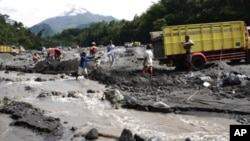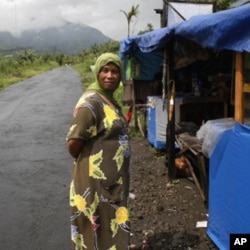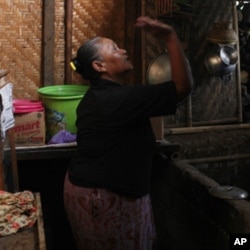For many, the foot of one of the most active volcanoes in the world is not considered as a desirable place to live. Yet, residents living near Mount Merapi in Indonesia have chosen to face the risks rather than to move further away from the mountain.
Tens of thousands of Indonesians typically live the slopes of the volcano, with agricultural activities being the economic backbone of these villages due to the rich volcanic soil.
However, residents near the mountain are prone to evacuations and a loss of their livelihood. A lethal eruption in November, 2010 claimed more than 200 lives and displaced about 278,000 people.
Government officials reported economic losses from the eruption will surpass $600 million (5.5 trillion Rupiah), due to the death of livestock and damage to the tourism, manufacturing and agricultural sectors.
More than a year has passed, but some areas leading toward Mount Merapi are still filled with half buried houses and burned trees set against a gray landscape of volcanic ash serve as grim reminders of the devastation.
But this has not deterred many from returning to their homes and starting economic activities almost immediately after the government declared volcanic activity had declined.
In Srunen, a village of 150 households in the Cangkringan district, villagers have already rebuilt their homes, made of concrete and bricks, signifying that they are here to stay.
Locals say Srunen is one of many small villages that face a high likelihood of being totally devastated by the next massive eruption.
They say the government has discouraged them from returning to Srunen . As an incentive, the Indonesian government has proposed providing more than $3,200 (30 million Rupiah) and a small plot of land elsewhere.
However, Jumilah, 39, a cattle farmer, said no one in the village took up the government's offer because the compensation was too low. “At the mountainside, we have ample land for farming and cattle-rearing, as well as to build our homes,” he said. “Why should we settle for smaller plots of land?”
Jumilah, who lost five cattle and her home in the eruption, recently bought two cattle from the compensation she received. But it will take time before the cattle produces enough milk to be sold. To get by, she sells fruits at a roadside stall leading toward the volcano.
Jumilah said she once earned between $21 (200,000 Rupiah) and $38 (350,000 Rupiah) monthly from selling milk, but her income is even lower from selling fruits now, as she has to buy the produce from growers.
Dargo, 45, who was also a cattle farmer, said it is not unusual for the villagers to return to their devastated villages after an eruption. “This is our home. What is there to be afraid of? But, if we move, where will we go?”
However, not all residents have gotten to choose.
Yoto, 63, is still living in a makeshift camp after more than a year since the volcano erupted. She is among the thousands of villagers who are permanently displaced. During the 2010 eruption, her village of Glagahmalang was entirely buried in sand.
She said the camp is likely to be her home for the rest of her life. “The government has declared our village to be too dangerous to live in, and hence, all villagers are ordered to move to this campsite,” she said.
From owning two large houses and five cattle and land for farming, Yoto now lives in a two-room house measuring six meters by six meters in the campsite, and is dependent on donations for living. She is also uncertain of her future should the donations be depleted, which is expected to end this year.
Peering over the site where her village once stood, Yoto said despite the bleak outlook, she has since accepted her fate for living beneath the volcano. “I have lost everything, but I choose not to think about it, as it will make me even sadder,” she said.
Yet, Yoto's fate does not deter the optimism of villagers who have chosen to return to their homes.
Indonesia, which is made up of 17,000 islands in Southeast Asia, has some of the world's most active volcanoes, being situated in the Pacific Ring of Fire.









